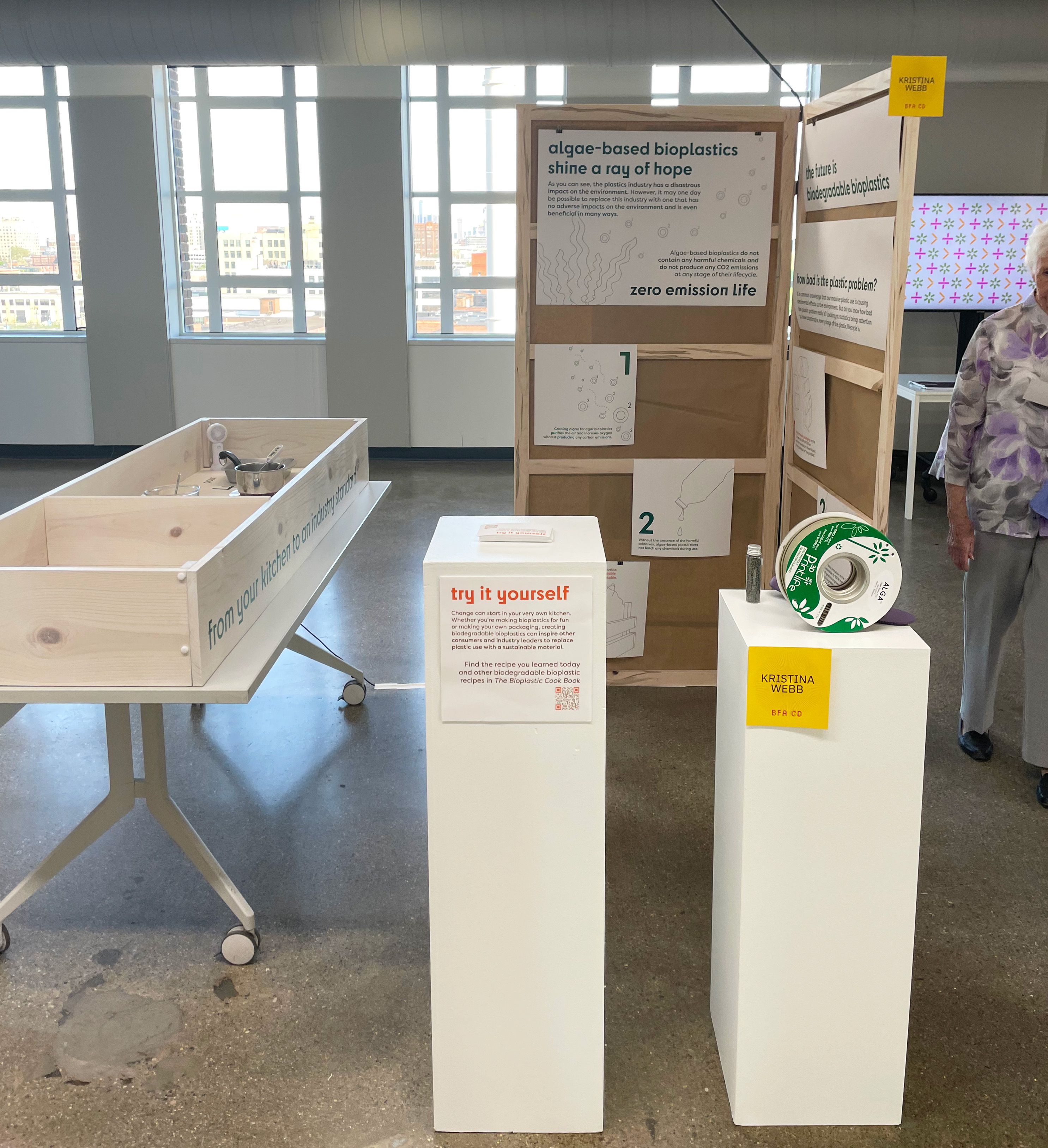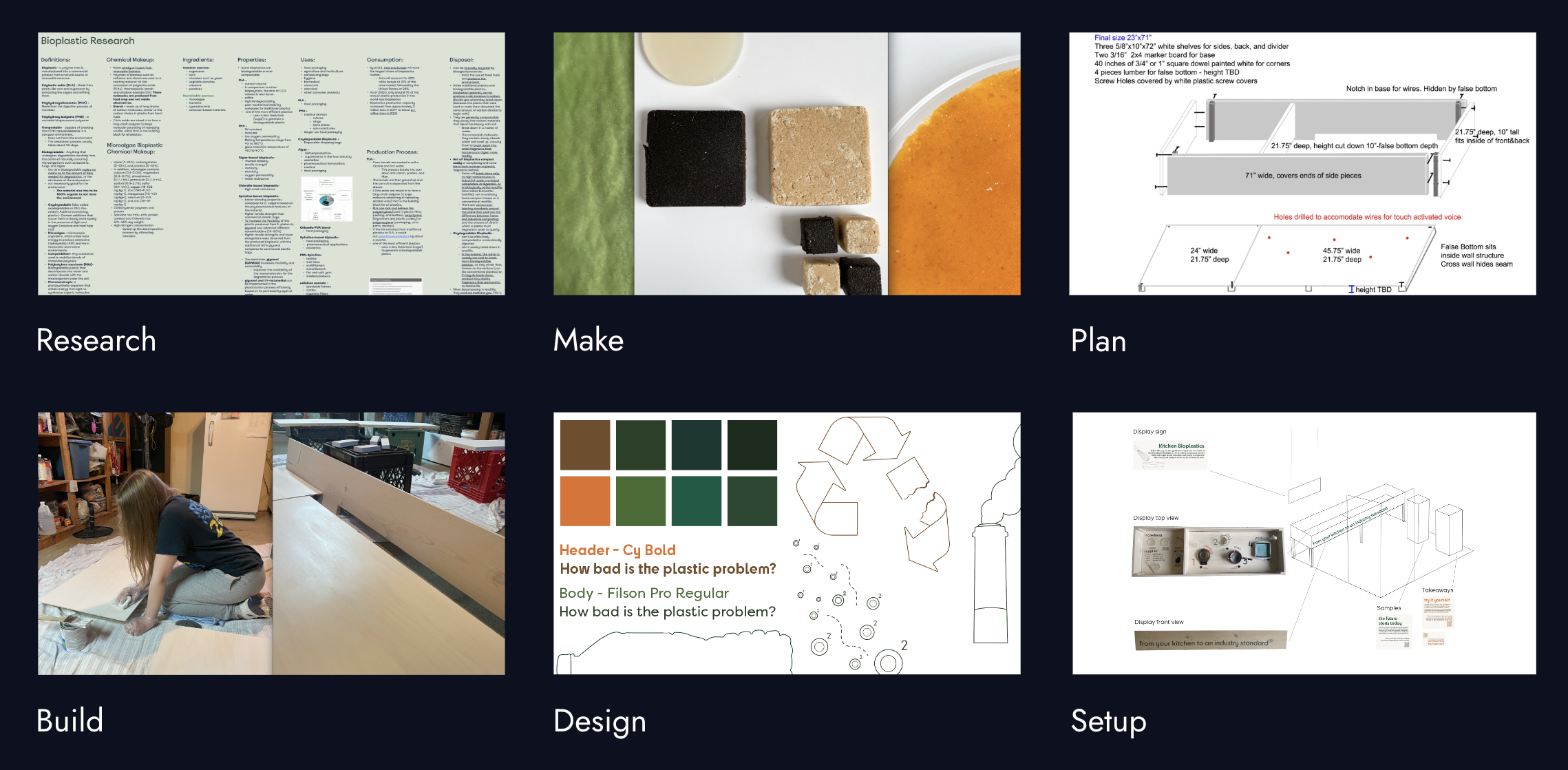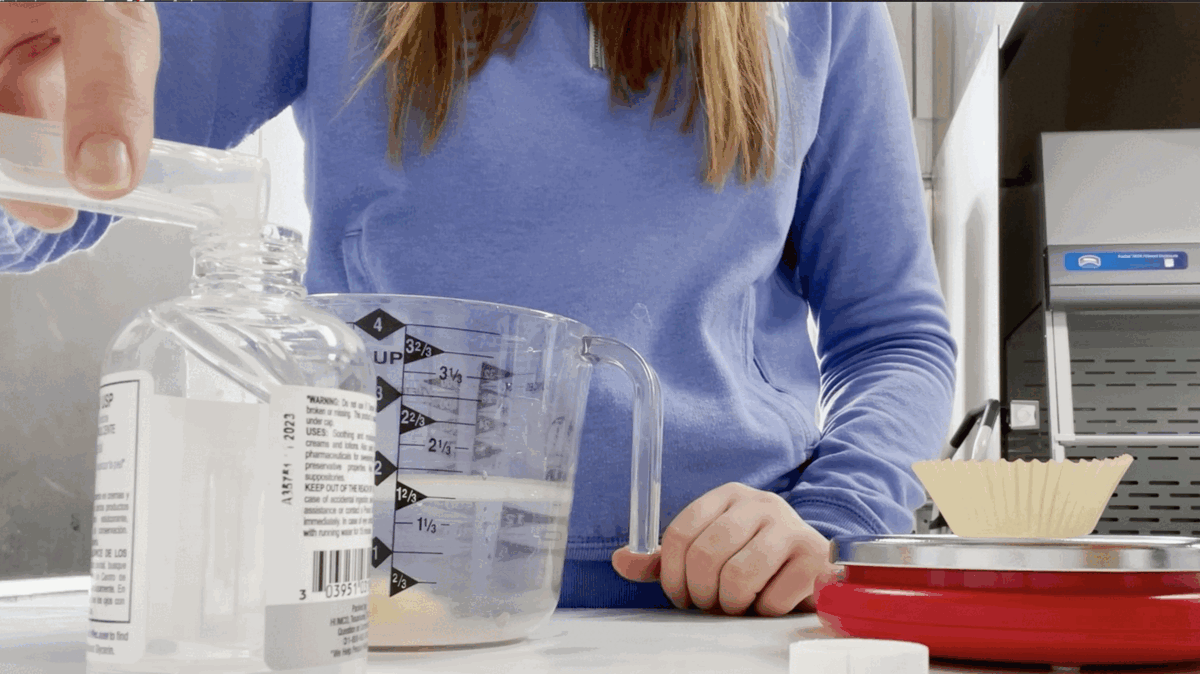The Future is Biodegradable Bioplastics
Exhibit Design
Medium - Exhibit Design, Interaction Design Print Design and Material Studies
Programs/tools - Adobe Illustrator, InDesign, Photoshop, Makey-Makey, Cricket Cutter and Miro
Specs - Interactive exhibit with physical material display and printed posters
Tags - exhibit design, interaction design, material studies bioplastics, agar-based bioplastics, sustainability
Petroleum-based plastics are one of the leading products causing damage to the environment. At every stage of the material’s lifespan, plastic generates a wide array of negative impacts on the environment. It is clear that we need a more environmentally friendly alternative.
That’s where agar-based bioplastics come in. While other bioplastics may appear to be more sustainable, their production and degradation is often still quite environmentally harmful. Agar-based bioplastics, on the other hand, do not have any negative effects on the environment at any stage in their lifespan and can actually be beneficial. In addition, the production of these materials is quite simple compared to the intensive process of creating actual plastics and can even be made at home. For this reason, it should not be difficult for companies to produce agar- based in the future as the technology surrounding this type of bioplastic advances.
My goal with this project was to design a four part interactive exhibit about consumers’ and manufacturers’ current and future material relationships with plastics. The first part of the exhibit showcases the devastating effects petroleum based plastics have on the environment. Then, the installation explains the benefits of using biodegradable bioplastics as an alternative. The exhibit also showcases that this alternative is a practical solution to the current plastics problem by showing that biodegradable bioplastics can one day be implemented on a commercial scale. In order to prove this to the audience, this part of the exhibit features an interactive step-by-step guide to educate the audience on how agar-based bioplastics can be simply made at home. Finally, the last part of the exhibit displays commercially produced agar-based products.
Goals and Objectives
- To bring awareness to the damage that petroleum based plastic is having on the environment.
- To show that biodegradable agar-based bioplastics are a better alternative to petroleum based plastics.
- To present ways that biodegradable bioplastics can be utilized.
Research
My research began by doing a deep dive into how petroleum-based plastic is produced, used and broken down as well as how plastic impacts the environment. Next, I researched the production, lifecycle and environmental impact of different biodegradable bioplastics. Once I discovered a few different types of bioplastics that were the most sustainable throughout their lifespans and were easy to make, I began making the different materials. After weeks of experimentation, I found a recipe for a type of agar-based bioplastic that I believed would be the best type of bioplastic to showcase. I began to dissect the steps within the making process to determine the best way to display each step in an interactive way. After the research portion of the project was complete, I filtered through the knowledge I gained in order to put the most important pieces of information into the exhibit’s posters, signs and interactive table display.
Audience
This project was not only an excellent opportunity for me to learn and share knowledge about the detrimental effects of petroleum-based plastics and a sustainable alternative but it was a way to share that there is hope within an industry that has damaged the earth for so long. Learning that biodegradable bioplastics are so easy to make that they can be made at home allowed me to give others hope and inspire people who can make real change within this industry.
What I learned
This project was not only an excellent opportunity for me to learn and share knowledge about the detrimental effects of petroleum-based plastics and a sustainable alternative but it was a way to share that there is hope within an industry that has damaged the earth for so long. Learning that biodegradable bioplastics are so easy to make that they can be made at home allowed me to give others hope and inspire people who can make real change within this industry.





Research

Make

Plan

Build

Design

Setup
